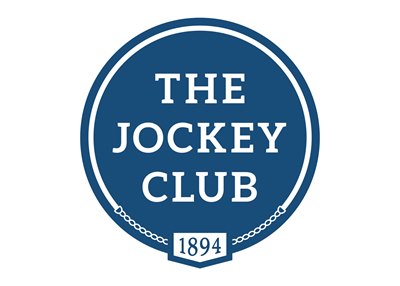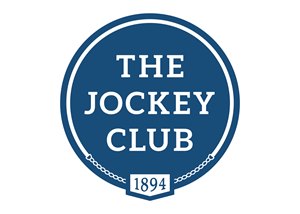The Jockey Club Adopts Cap of 140 Mares Bred


The Jockey Club put in motion a fundamental shift in the North American commercial breeding industry May 7 when it announced a new rule that would limit to 140 the number of mares that can be bred to a stallion in a calendar year.
The change, first proposed in September, was implemented to address a declining and concerning degree of diversity within the Thoroughbred gene pool. Declining genetic diversity has been linked by one study to the trend since 1996 of stallions breeding books of well over 100 mares.
Mitchell: Study Connects Rise in Inbreeding to Larger Books
In 2007, 5,894 mares (9.5% of the total) were bred by stallions who covered more than 140 mares. By 2019, 7,415 mares (27% of the total) were covered by stallions with books of more than 140, a threefold increase, according to The Jockey Club's report of mares bred statistics.
Effective immediately, The Jockey Club's Principal Rules and Requirements of the American Studbook have been amended by adding the following language in italics to the text of Rule 14C:
C. Based on the information on a completed Report of Mares Bred form, The Jockey Club will forward to the stallion owner, lessee or authorized agent a pre-printed Service Certificate for each broodmare bred, including the name of the stallion, the name of the broodmare, the name of the dam of the broodmare, and the date of the last cover.
The total number of broodmares bred per individual stallion whose year of birth is 2020 or thereafter shall not exceed 140 per calendar year in the United States, Canada, and Puerto Rico. The Jockey Club shall limit the number of Stallion Service Certificates for such stallions to a maximum of 140 per calendar year.
When the stallion owner, lessee or authorized agent receives the pre-printed Service Certificate, it should be examined for accuracy, signed by the stallion owner, lessee or authorized agent and forwarded to the breeder of the foal or submitted to The Jockey Club through Interactive Registration. The Service Certificate is required to register a foal. Service Certificates will not be issued unless a completed Report of Mares Bred form is on file at The Jockey Club and until genetic or re-DNA typing of the stallion has been completed (see Rule 5).
For stallions born in 2019 and earlier, there will be no limit to the number of mares reported bred in the United States, Canada, and Puerto Rico. The Jockey Club will issue stallion certificates for all mares bred by such stallions within the United States, Canada, and Puerto Rico during a calendar year.
Stallion Service Certificates will be issued on the basis of first cover date in the order of mares listed on the Report of Mares Bred. If a mare is bred early during the breeding season and dies soon after, her mating still counts against a stallion's 140 cap.
"The Jockey Club is grateful for the many thoughtful comments in response to its September rule proposal," the registry said in a statement. "The stewards carefully considered those comments in formulating a rule that will promote diversity of the Thoroughbred gene pool and protect the long-term health of the breed."
Several Central Kentucky stallion owners and managers said they still would prefer to see market demand determine the number of mares bred to any given stallion.
"I believe in allowing the market to be the driver. I believed that when this was proposed, and I still believe that," said Headley Bell with Mill Ridge Farm and Nicoma Bloodstock. "We put in our syndicate for Oscar Performance that we were going to limit his book to 140 mares, so we believe in that, but then it should be up to each farm to make that decision. Then you allow the consumers—the breeders—to decide. If they don't believe in that policy, then they won't support the horse. Markets should be drivers; it is a free economy."
"I prefer that the free market dictate what people do," added John Sikura, the president of Hill 'n' Dale Farms. "Eventually, we'll have two tiers of stallions, one tier that can breed an unlimited book of mares that could be as young as 5 years old and one that is breeding with limits. I'm not sure what that's going to mean. Anytime you artificially impose restrictions in markets, there is the possibility of good things and the possibility of unforeseen complications."
As for threats to the Thoroughbred population's health due to narrowing diversity in the gene pool, both Bell and Sikura said they had not seen enough evidence supporting this position.
"I don't buy into the genetic diversity argument just because a horse breeds a lot of mares," Sikura said. "The stallion could be an outcross, so that is a specious argument."
Others farm owners and managers said they thought the new rule was an important, positive change.
Walker Hancock, the president of Claiborne Farm, supported the rule change as an important first step toward allowing the Thoroughbred breeding industry to be more sustainable and to produce sounder horses over the long term.
"There are a lot of positives I think that will come of this, even though we won't see those benefits for 10 years or so," he said. "This is a long-term plan. The sustainability of our industry is what's important."
Bill Farish with Lane's End said he's been a proponent of this rule change from the start and still feels strongly that it is in the best interest of both breeders and the future health of the breed.
"The comments received were overwhelmingly supportive of the rule change," Farish said. "People recognized for the good of the stallions and for the good of the breed, this is the right thing to do."
"I can see how this decision can benefit the industry at this point in time by increasing diversity and spreading the wealth of mares," added Brian Graves, the general manager at Gainesway.
The team at Spendthrift Farm has been one of the most vocal critics of the mares-bred cap. The Lexington-area farm owned by B. Wayne Hughes stood 26 stallions in Kentucky during the 2019 breeding season, which included four stallions who bred 165 mares or more in 2018.
In September, Spendthrift general manager Ned Toffey said capping book size could dramatically increase stud fees and impose economic barriers for a lot of breeders.
"If you were to reduce Into Mischief's book, his becomes a very expensive stud fee, and the way it is now works for a lot of smaller breeders," Toffey said in September, adding that he was skeptical the rule change was truly about genetic diversity. "We would like to see the data. I think there is no question that there is an economic factor here. Is it about the gene pool or about competition?"
Asked May 7 about the rule going into effect with its implementation starting with the future stallions born in 2020, Toffey declined to comment.
The time frame for implementing the rule received the most support among stallion owners and managers.
"The way they did it is probably the smoothest path toward the goal of limiting the books to 140," Hancock said. "It is not really fair to people who spent a bunch of money on a stallion thinking they had unlimited breeding certificates. Now the rules are in front of us, everyone knows what to expect, and the playing field will get leveled."
"I appreciate the time frame in which the rule was enacted, with the consideration to stallion farms' current investments and valuations," Graves said.
Many also recognized the potential benefit of the cap providing more support to stallions in their second through fourth years at stud, when attracting mares can be a struggle.
"Even with good horses now, you get to their second, third, and fourth years, the market dries up. This is probably going to help those later books some," said Ben Taylor, the vice president of Taylor Made Stallions.
Sikura said he could see pros and cons but added the benefits will always be judged stallion-by-stallion.
"Spreading the mares among different stallions will always depend on the stallions someone has. I have some successful horses that should get more mares but don't because we're breeding 200 mares. I also have very popular horses that breed more than 140 mares," Sikura said. "This gives a lot of lead time, which is important."

Sikura also speculated that the long implementation period could make a legal challenge unlikely because it does not affect any stallion who has been purchased or affect one who has been managed under the previous rules.
"Everyone has been forewarned," he said.
While any long-term effect of the rule change is unknown at this point, some expect capping the number of mares to eventually lower the market value of stallion prospects while potentially increasing the demand for shares in the most popular syndicated horses.
"Back in the 1970s-'80s, you almost had to buy a share in a horse if you wanted to breed to him," Taylor said. "Then there was no use buying a share because they were breeding so many. We're not going back to those earlier days but certainly more toward the middle. People might start getting more aggressive in buying shares."
Because the mares-bred cap only applies to the United States, Canada, and Puerto Rico, Sikura said this change could open up opportunities for farms in South America.
"The real winner in this might be the shuttle marketplace because of that gap in income. You can make it up in the Southern Hemisphere," Sikura said.
